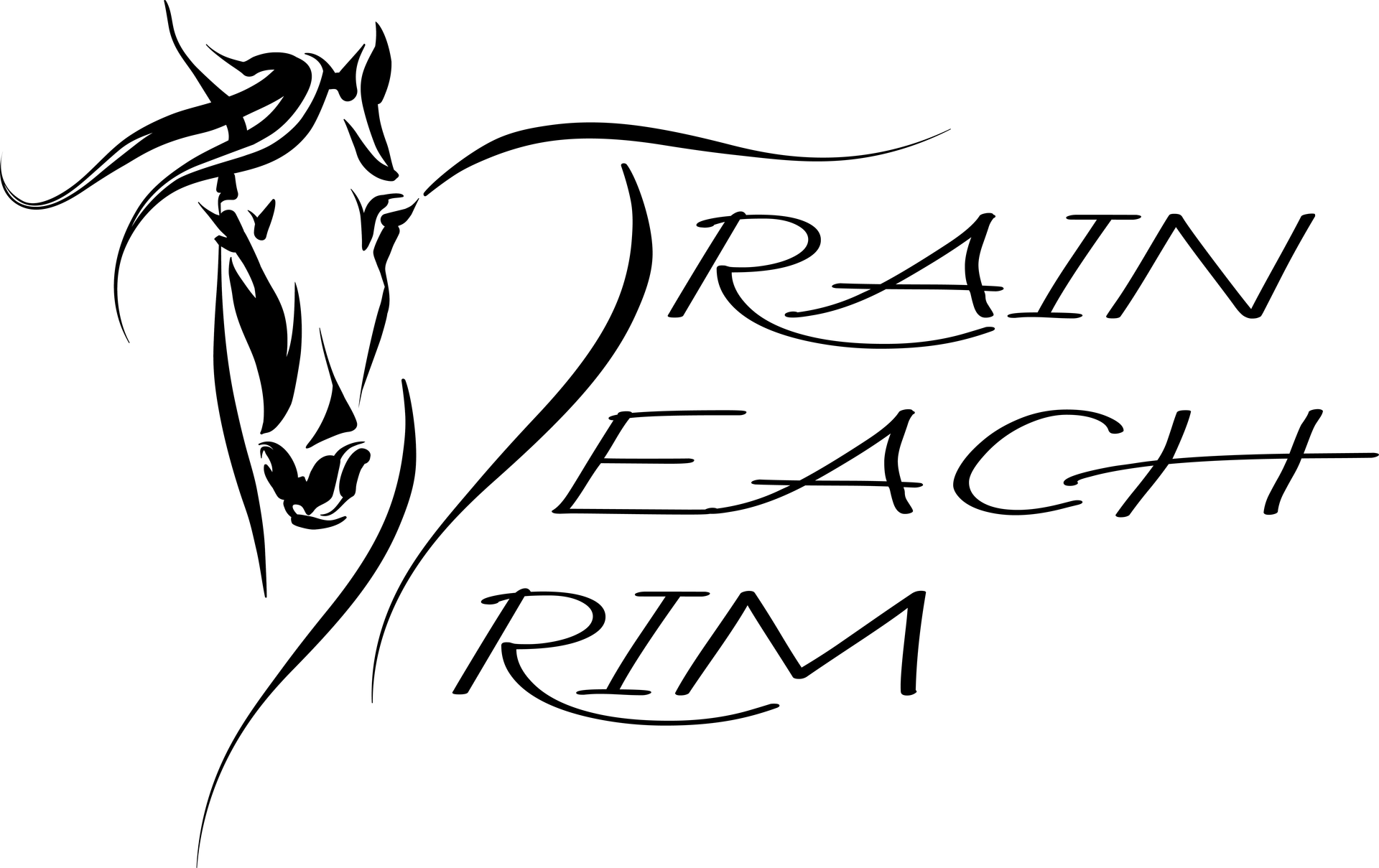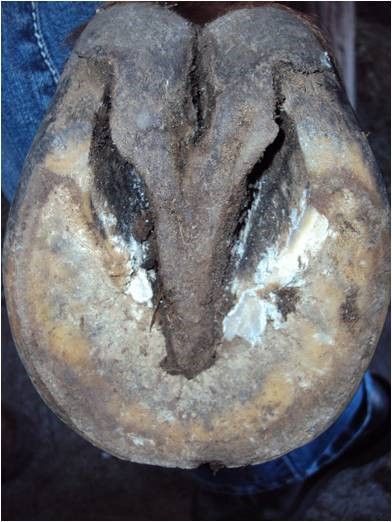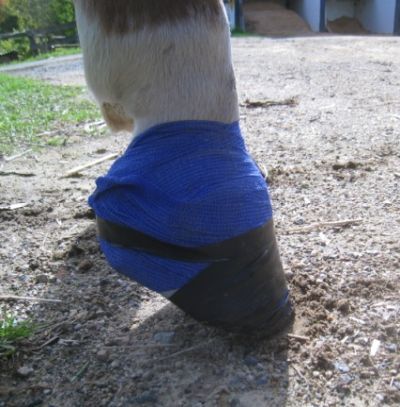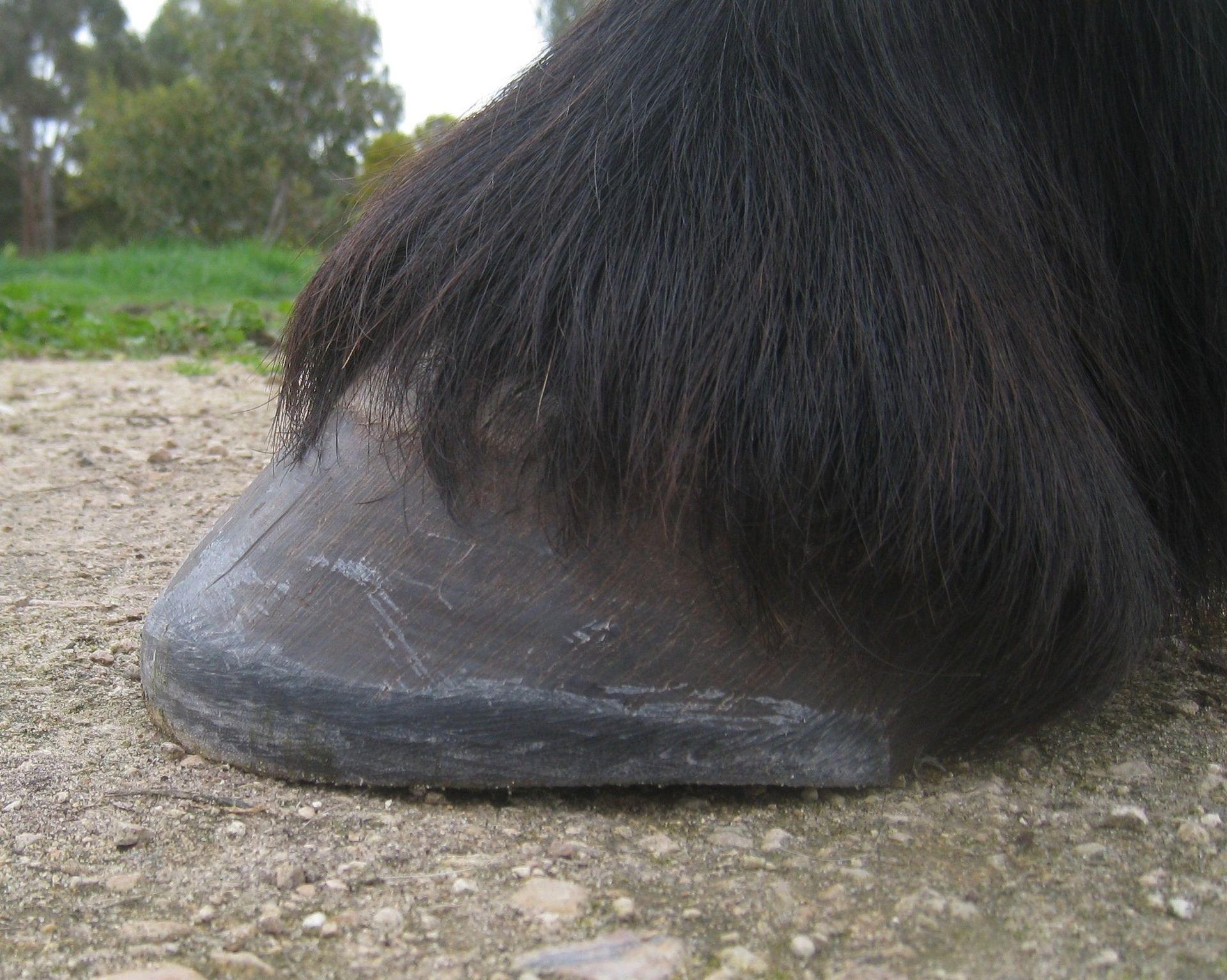Treeless Saddles - Why and How?
Why saddles with trees can be a fitting nightmare

The article below was written by Jenny many years ago. These days we commonly use Freeform Treeless Saddles for starting and training horses. And yes, Richard has hunted in a treeless Ghost Saddle!
Many riders have had problems with saddle fit at one time or another. It is a common topic on among horse owners, you can see it daily on the various horse forums, and it is not unusual for some people to spend huge amounts of money on one saddle after another that just do not work for their horses even though they may have been professionally fitted to the horse. Even a made-to-measure saddle can fail to fit!
How can this happen ? The main reason is that a traditional treed saddle is fitted to a static (not moving) horse. This is highly deceptive and does not allow for a moving back and shoulders.
Also, horses change shape a lot during their lifetime with growth, weight and muscling altering from week to week in some cases. These changes mean that the fitted treed saddle would need to be adjusted whenever a body fluctuation takes place.
So, how, and why does the tree cause problems for the horse ?
The tree points extend down either side of the pommel arch. It is made of steel and the points are shaped like butter knives. It is obvious that they can cause pressure, digging into the muscles. Long term damage can extend to nerve damage and muscle atrophy, specifically the trapezius muscle. As the horse turns and bends, the tree points dig in and this is a problem with any horse, even narrow ones.
As the horse moves, the shoulder blade (scapula) moves backwards and forwards. When it is furthest back, the top of the scapula pushes against the tree point. This will actually push the tree across the back at an angle.
There is a myriad of ways that the tree can cause pain and damage to the horse during motion. The most common saddle fit problems that can be solved by treeless saddles are – bridging; squashed shoulders from tight gullet; loin damage from too long panels; pressure points to top of scapula; wither damage from no wither clearance; pressure from saddles that roll on flat backed horses; and more!
Pain in the horse is shown in various ways. Some horses are stoic and things must get really bad before they will show their discomfort. Some horses are good communicators and will let you know straight away. Unfortunately, their way of communicating to us is often thought to be “naughtiness.” They are then forced to accept the discomfort by training. Usually, the more advanced trained horses will not show their discomfort until it become extreme because they dare not.
Any undesirable behaviours might be a sign of pain – check it out before you accuse the horse of being naughty.
But weren’t trees invented for a good reason?
Most people would guess that trees in saddles are there to protect the horses back and distribute the rider’s weight evenly.
The actual reason is to help keep the riders on the horse during combat. Stirrups were first made in around 300 AD to better keep the riders on the horses. By 600 AD the saddles were made large enough to carry a massive knight in amour and all his weapons. The tree was necessary to hold the stirrups securely and stop the saddle from slipping under the weight of the soldier. The next step was the stuffing which protected the horse from the tree.
The weight distribution aspect is a trick – it is impossible if you put an unyielding, stiff object between two mobile creatures.
How can a treeless saddle work for horse and rider?
Treeless saddles are constructed of several layers of leather, foam, synthetic fur, and other shock absorbing materials. The saddle molds softly around the horses’ body and follows every move, without restriction. The horse’s stride lengthens and the movement of the shoulders and back is free and more powerful as the horse moves forward with more relaxation and ease.
The rider sits nicely ‘on’ and not above the horse, gaining a very close contact and intimate connection with the animal. Balance, harmony and improved comfort for horse and rider, are the most obvious advantages for the rider.
The soft structure and flexibility of our saddles enables the horse to move without losing its natural grace, allowing full ‘range of movement’ while carrying the rider. The horses back can arch and thus enhances vertical and lateral movement of the thoracic vertebral column. The rider is placed right behind the wither therefore avoiding pressure on the loins while allowing full range of movement of the shoulder blades. This way the riders’ weight is carried without causing pain, discomfort, and damage to the horse's body.
The horse should ideally not have any weight bearing beyond T14 but definitely no saddle should load the horses loin area behind the last rib (T 18) The area on the horse's back equipped to carry us the most comfortably is between the 9th and 14th thoracic vertebrae, this area is in fact a lot smaller than most of us think. This is particularly true if you own a horse that is short in the back. The further we move away from the horse's centre of gravity the more likely it is that soundness problems will occur.
Treeless saddles wraps the rider’s weight around the horse’s centre of gravity. If you look at your buttocks and upper thighs and compare the size of that area with the panels of a treed saddle you might find that the treeless rider actually distributes their weight over a larger area than the rider in a conventional saddle.
What about protecting the spine of the horse?
The seat bones of the rider are naturally positioned to the left and right of the horse’s spinous processes and not on top. Additionally, the cushioned saddle sitting area plus the therapeutic saddle pad and the panels of the saddles protect both horse and rider from pressure spots. Treeless saddles have been used by endurance riders for close to 20 years in Europe and the US. You can trust that it is in fact a myth that we need lots of clearance over the horse’s spine, as long as there is no direct pressure on the dorsal processes no harm is done. Thermal imaging and high-tech pressure tests of our saddle brands have shown that there is no pressure directly on the spine provided they are used as recommended. The Barefoot saddles also give excellent wither clearance and they have a smart in-built panel system to generate spinal clearance, they are therefore also recommended for high withered horses in combination with a special saddle pad. Some horses are very sensitive and / or have missing topline, and there are a number of options available to pad under the saddle to suit.
What does it feel like to ride treeless?
That depends on the brand but some of the softer saddles it is similar to bareback riding, only more comfortable and safer in that the rider is supported by the front and rear raised parts of the saddle and fenders or stirrup leathers are usually attached, but they are removable.
Other treeless saddles feel more like a normal saddle to the rider but it provides a better contact and all the other benefits of a treeless saddle. Some saddles have a twist more similar to a conventional English saddle and therefore the adjustment for the rider is minimal. In these saddles you will not sit as wide which makes it also suitable for riders with impaired hip joints.
Provided you have a well-fitting set up, treeless riding is the most comfortable way to be on a horse, comfier than riding bareback and once you have ridden in one for a while you will be surprised how uncomfortable, hard, and rigid your former favourite traditional saddle now feels. You will be amazed at how you feel that you are sitting “on” your horse and can feel every movement of the back and really be part of your horse.
Are there any restrictions to the using these saddles?
A treeless saddle should only be used with a special additional pressure-absorbing underlay at all times. This underlay needs to have top quality shock absorption, a contoured shape allowing for the horses wither, it needs to create a channel over the spine and it must be made from a breathing skin friendly material. The harder you work your horse the better the padding needs to be.
Some brands have weight restrictions so be aware of this and be honest about your weight!
Some brands of saddles have restrictions on how high you can jump in them, most are fine up to 1 metre so if you wish to jump higher, enquire about the jumping restrictions.
Some saddles do not have a narrow twist therefore you are sitting as wide as your horse really is. Rule of thumb is, if you are comfortable on your horse riding bareback you will be comfortable in the saddle.
Beginner riders would be well advised to take riding lessons with a good instructor; it is simply fairer on the horse and a lot safer for the rider. Dressage is the foundation to any style of riding, so it is the best place to start. Beware of instructors who will ask you to nag your horse rather than to help you to improve your balance, aids, and timing re-release of pressure. Generally, we find the best instructors have a back ground in classical dressage or centred riding techniques. The treeless saddles can be a wonderful training aid in learning a very good seat and to teach you sensitivity to your horse’s movement. You will have a definite advantage in these saddles due to the close contact and you will therefore learn faster than in a treed saddle. You are not held in a position but will learn to carry your own bodyweight in a balanced way which your present and future horses will appreciate.
It is recommended using a well-fitting breastplate with all saddles they should be especially for hill work. A breastplate will stop your saddle slipping sideways or back in hilly terrain and works like a safety belt in case you are riding with a loose girth. Terrible accidents with all sorts of saddles could have been prevented if only the rider had remembered to put that breastplate on. To ride endurance without breastplate means asking for trouble and there are discussions going on to make the use of them compulsory.
Endurance riders and others that spend long hours in the saddle will have special requirements – talk to the supplier to make sure your needs are met.
Not all “Treeless” Saddles are the same!
A treeless saddle, when set up incorrectly, when it is badly designed or lacking the right type of underlay can create numerous problems for your horse’s back. Not all treeless saddles are created equal and the right underlay is extremely important.
Treeless saddles are gaining appreciation by riders and their horses worldwide and are now found in international competitions of most equestrian disciplines. Treeless saddles were officially approved for EA competitions in Australia in February 2006. Treeless saddles are taking Europe, the US and Australia by storm because of the great design, versatility, and the affordable price.






